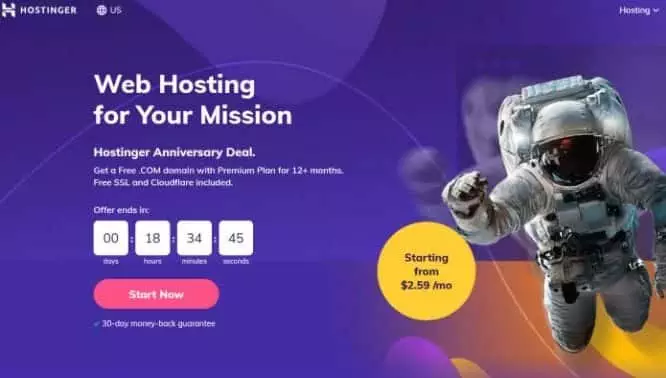This post contains affiliate links. As an affiliate associate, I earn from qualifying purchases. Learn more
Defining your focus for a successful blog means sharpening your vision for what you want to accomplish through your blog. It involves deciding who your target audience is and the best way to reach them. This clarity in purpose sets the direction and tone of your blog, ensuring it aligns with your aspirations and values.
This crucial first step lays the foundation for a successful blog. Without defining your focus and your goal, your blog risks becoming aimless, lacking in unique appeal and identity. In the bustling digital landscape, a blog without focus is easily overshadowed by the countless others vying for attention.
Moreover, without clear direction, crafting consistent, engaging content that speaks to your audience and embodies your vision becomes a significant challenge.
This guide will walk you through the essential steps to define your focus and goal for a successful blog. We’ll cover how to pinpoint your niche, understand your readers, establish your goals, and articulate your unique selling proposition.
By the article’s conclusion, you’ll have a well-defined focus that not only positions your blog for success but also propels you forward in your blogging endeavors, helping you to meet and exceed your objectives.
Table of Contents
What Happens & What Goes
YOU MAY ALSO WANT TO READ: Blogging Essentials: Creating Your Profitable Blog in 4 Steps | 2024
by Leonard
1. Identifying Your Niche: Define Your Focus
Before defining your blog’s direction, it’s crucial to pinpoint your niche—the core topic or theme you’ll explore. This niche forms the foundation of your content and directly appeals to your target audience.
Your niche embodies your passion, expertise, and the unique value you offer, making it central to your blog’s identity.
a. Understanding the Importance of a Niche
A niche is vital for several reasons, allowing you to:
- Draw in and keep a dedicated and engaged audience aligned with your interests and needs.
- Distinguish yourself from competitors and achieve a unique position within your industry.
- Produce consistent, high-quality content that addresses your audience’s issues and piques their curiosity.
- Monetize your blog through relevant products or services desired by your audience.
A niche isn’t merely a subject but a distinct perspective within that subject. For example, travel is a vast area, yet focusing on solo female travel narrows it down to a niche. Similarly, fitness encompasses a wide range, but vegan fitness zooms in on a specific niche.
Identifying a niche helps target a particular market segment, enhancing your blog’s relevance and impact.

b. Researching and Selecting Your Niche
To find your ideal niche, consider various brainstorming methods, including:
- Industry-focused approaches, such as blogs dedicated to cryptocurrency or art.
- Targeting specific audiences, like small business owners, SEO professionals, or newlyweds.
- Choosing a subject matter, such as news content or movie reviews.
Tools like Ahrefs’ Keywords Explorer or Semrush’s Keyword Magic Tool offer insights into niches by analyzing search volumes, keyword difficulty, and potential for traffic. While these tools are limited under a cost-price, we highly recommend the keyword planner tool from Google Ads, which is in our opinion, one of the best tools for finding keywords, and more for free.
Just create a Google Ads account if you don’t have one yet, and then go to Tools- Keyword Planner.
See more here:
YOU MAY ALSO WANT TO READ: https://hapngo.com/rank-maths-youtube-channel
by Leonard
These resources can uncover niches with high demand and low competition, presenting opportunities for organic growth.
In selecting a niche, weigh these critical factors:
- Passion and interest: Choose a niche you’re enthusiastic about to maintain motivation and engagement.
- Expertise and knowledge: Opt for a niche where you have or can develop authoritative insights, ensuring credible and impactful content.
- Profitability and monetization potential: Your niche should offer viable opportunities for earning, supporting your blog’s sustainability and ambitions.
YOU MAY ALSO WANT TO READ: 1st Step: Find a Memorable Domain Name (Website Creation)
by Leonard
c. Evaluating the Competition Within Your Niche
Analyze your chosen niche’s competitive landscape by considering the existing demand and competition level. Competition indicates market interest but avoids overly saturated niches that may hinder visibility and growth.
Use tools like Ahrefs’ Site Explorer or Semrush’s Domain Overview to evaluate top competitors, examining metrics such as domain authority, traffic volume, backlinks, and content quality. Assessing competitors’ strategies, monetization approaches, and user engagement can highlight what works and identify market gaps.
Aim for a niche that validates its market presence through manageable competition, while also presenting opportunities to leverage your unique strengths and content.
What Happens & What Goes

2. Understanding Your Audience: Who Are You Writing For?
Once you’ve pinpointed your niche, getting to know your audience is crucial. They’re the readers of your blog who might just turn into customers or loyal followers. Grasping who your audience is enables you to craft content that aligns with their needs, interests, and preferences.
This understanding is key to communicating effectively and fostering trust and loyalty among your audience.
a. Creating Audience Personas
Creating audience personas is a strategic way to get to grips with your audience. These are made-up profiles of your ideal readers, based on actual data and research.
These profiles are detailed, covering aspects like:
- Name, age, gender, and location
- Occupation, income, and education level
- Goals, challenges, and the problems they’re looking to solve
- Interests, hobbies, and values
- How they behave online, their preferences, and where they get their information
These personas help you to picture your audience, making it easier to empathize with them and guide your strategies for content creation, marketing, and communication.
Additionally, they can be used to segment your audience, allowing you to customize your messages for different reader groups.

b. Tools for Audience Research and Analysis
To create audience personas, you’ll need to conduct some research and analysis to collect data and insights about your audience.
Here are some tools that can aid in this process:
- Google Analytics: A free tool for tracking website traffic and user behavior, offering insights on visitor numbers, sources, activities, engagement, and more.
- Facebook Insights: A free analytics tool for your Facebook page that reveals information about your followers, including demographics, interests, and engagement levels.
- SurveyMonkey: An online survey tool that enables you to gather direct feedback from your audience, asking about their needs, preferences, and opinions.
c. Engaging with Your Audience for Insights
Directly engaging with your audience is another effective way to understand them, allowing you to collect their input and feedback.
This can be achieved by:
- Interacting with their comments on your blog, social media posts, or emails.
- Conducting polls or asking questions on your blog or through social platforms.
- Encouraging them to subscribe to your email list, or newsletter, or join an online community.
- Offering incentives like freebies, discounts, or running contests to foster participation.
Such engagement builds rapport and trusts with your audience, yielding valuable insights about their views, preferences, and expectations.
This valuable feedback can be leveraged to refine your content, offerings, and strategies, ultimately boosting conversions and sales.
What Happens & What Goes
3. Setting Your Blog’s Objectives: What Do You Aim to Achieve?
Now that you’ve honed in on your blog’s focus, it’s time to outline your objectives—these are specific, measurable, and deadline-driven goals that guide your path to blogging success. Ensure these objectives resonate with your chosen niche, target audience, and overarching vision.

a. Define your focus: Clear and Measurable Goals
To establish your blog’s objectives, apply the SMART criteria, standing for Specific, Measurable, Achievable, Relevant, and Time-bound.
Consequently, your objectives should be:
- Specific: Clearly articulate your aims, methodologies, and reasons.
- Measurable: Include criteria to assess progress and success.
- Achievable: Be realistic, considering your resources and capabilities.
- Revant: Ensure alignment with your niche, audience, and ultimate goals.
- Time-bound: Set deadlines or specific timelines for goal achievement.
An example of a SMART objective for your blog might be: “To increase organic traffic by 50% within six months by consistently publishing two SEO-optimized blog posts weekly and leveraging social media for promotion.”
b. Aligning Objectives with Your Niche and Audience
Objectives must resonate with your niche and audience.
Reflect on:
- The primary challenges or needs of your audience within your niche.
- How does your blog address these challenges or needs?
- Key search terms or topics your audience pursues in your niche.
- Strategies to enhance your blog’s ranking for these keywords or topics.
- The landscape of competitors or influencers within your niche.
- Ways to distinguish your blog by offering unique value.
Understanding these aspects will enable you to formulate objectives that not only align with your niche and audience but also bolster your blog’s growth and authority.
c. The Role of Consistency and Quality in Achieving Your Goals

Merely setting objectives isn’t sufficient. Attaining them requires diligence and astuteness. Success hinges on consistency and quality.
Strike a balance between the two by:
- Consistency: Adhere to your publishing schedule to cultivate audience trust, and loyalty, and enhance SEO performance.
- Quality: Produce valuable content, engaging, and tailored to your audience, fostering reader retention and promoting conversions.
Consistency and quality should go hand in hand for the best content delivery. Employ tools like Grammarly or Hemingway for writing enhancements and Canva or Unsplash for captivating visuals.
YOU MAY ALSO WANT TO READ: Rank Math SEO Plug-in: Learn SEO From The Best WordPress Tool 2024
by Leonard
d. Monitoring Progress and Adjusting Strategies
Track your progress and adjust strategies as necessary. Utilize analytics tools like Google Analytics or Facebook Insights to gauge your blog’s performance against your goals.
Reflect on your strengths and weaknesses, discern what’s working (and what isn’t), and modify your approach accordingly. Experiment with new tactics to refine your strategy.
Regular evaluation and adjustment not only optimize your blog’s efficiency but also accelerate the achievement of your objectives. Celebrate successes, learn from setbacks, and stay driven and inspired along the journey.
What Happens & What Goes
Conclusions and Recommendation
In this article, we’ve walked you through the essential steps for pinpointing your blog’s focus for 2024.
We’ve delved into:
- Identifying your niche: This is about determining the central theme or subject matter of your blog.
- Understanding your audience: Knowing who your blog appeals to can help turn readers into loyal followers or customers.
- Setting your objectives: Establish clear, measurable, and achievable goals for what you wish to achieve with your blog.
Adhering to these guidelines will help crystalize your blog’s focus, steering you toward a path of success and helping you meet your blogging objectives.
Now, it’s time for you to spring into action. Kick things off by brainstorming niche ideas, delving into audience research, and charting out your goals. Next, draw up a detailed blog plan and publishing schedule, and begin crafting and sharing quality content.
Remember, consistency is key. Keep an eye on your progress, fine-tune your approach as necessary, and stay the course.
Don’t delay. Solidify your focus now and embark on the journey to launching a thriving blog in 2024!
We highly recommend starting the blogging journey with Hostinger. It is the most high-quality value-price host provider above all other options out there, from our experience.
- Wondering which is the best plan to choose for your blog?
Your Guide To Web Hosting (2nd Step): Find The Best Plan + Hostinger Review
To embark on this digital journey, two fundamental steps must be addressed: selecting a unique domain name and finding a reliable web hosting service.

Feel free to get in touch in the comment section below!
Let’s create a better world together!
Author Profile

-
Hi, I’m Leonard, the founder of HapnGo "What Happens & What Goes". I am a visionary entrepreneur with multilingual fluency. I have a degree in accounting and marketing with proficient digital technology competencies. I am passionate about creating compelling content that resonates with diverse audiences.
My mission is to provide value to you and the rest of the world.
Let's create a better world together!
Leonard
Latest entries
 6th Step: Launch And OngoingJune 7, 2024Rank Math’s Youtube Channel: Your Best Guide to SEO Succes in 2024 | HapnGo
6th Step: Launch And OngoingJune 7, 2024Rank Math’s Youtube Channel: Your Best Guide to SEO Succes in 2024 | HapnGo Define Your FocusJune 7, 2024Define Your Focus: 1st Step for a Successful Blog in 2024 | HapnGo
Define Your FocusJune 7, 2024Define Your Focus: 1st Step for a Successful Blog in 2024 | HapnGo BloggingMay 26, 2024Blogging Essentials: Create Your Profitable Blog in 4 Steps in 2024 | HapnGo
BloggingMay 26, 2024Blogging Essentials: Create Your Profitable Blog in 4 Steps in 2024 | HapnGo 6th Step: Launch And OngoingMay 23, 2024WordPress Security: Ultimate Plug-in to Safeguarding Your Site in 2024 | HapnGo
6th Step: Launch And OngoingMay 23, 2024WordPress Security: Ultimate Plug-in to Safeguarding Your Site in 2024 | HapnGo





